Review: Justice League: Cry for Justice (Hardcover)
Writer: James Robinson
Artists: Mauro Cascioli and Scott Clark
Howdy folks, I’m back again with a special review of Cry for Justice, a seven issue mini-series starring a pro-active Justice League aiming to take the fight against villainy. This past week the mini-series was collected and released in hardcover format, along with a handful of extra goodies for the kiddies picking up this collected volume. Let’s take a look, shall we?
Synopsis
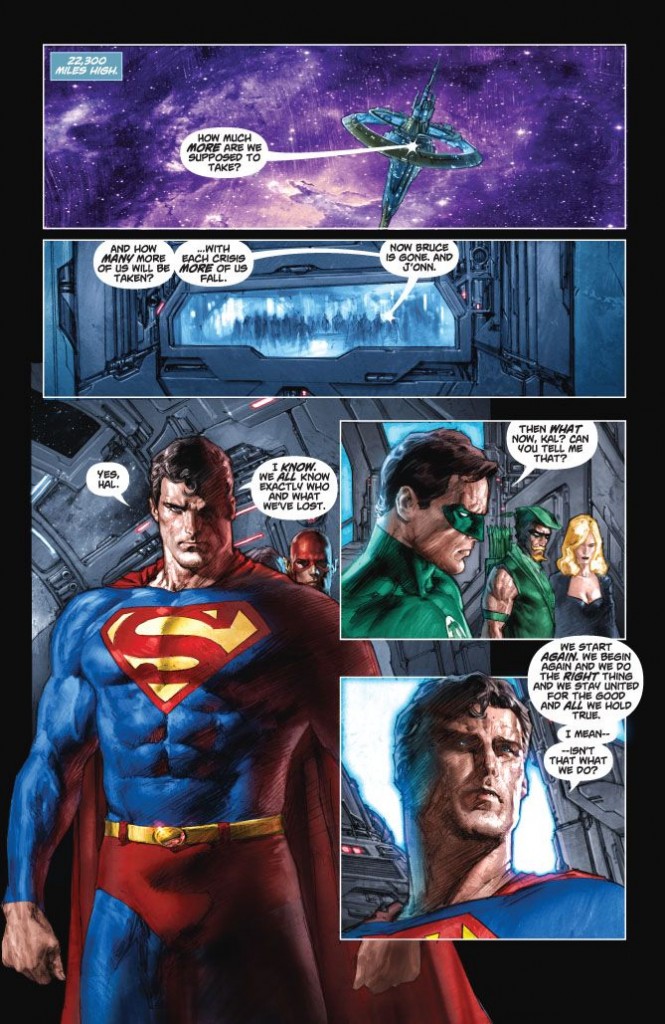 “We’re ticked off and we’re not going take it anymore!” sums up the tone the characters take in this series fairly well. Cry for Justice takes place not too long after the events of Grant Morrison’s Final Crisis. With the losses of both Bruce Wayne and J’onn J’onnz still fresh in their hearts and minds, a group of heroes band together to take the fight directly to the DCU’s bad guys before they can hope to hatch their evil schemes. Feeling that the Justice League hasn’t done enough to protect the world from threats, two characters leave the Justice League and go off on their own. Together, Green Lantern Hal Jordan, Green Arrow, Supergirl, Captain Marvel, The Atom, Starman and Congorilla look to uncover the identity of the person responsible for a series of murders and thefts across the DC universe. Unfortunately for our heroes, that man happens to be the cold and calculating villain Prometheus, a character rivaling Bruce Wayne’s genius as a tactician. Prometheus is perhaps mostly known as the villain who single handedly defeated the Justice League during Grant Morrison’s run on JLA, and he looks to make a name for himself once more to the detriment of DC’s heroes. And so the story begins, but the true breadth of Prometheus’ plans and the scope of his plot our heroes can’t even begin to fathom.
“We’re ticked off and we’re not going take it anymore!” sums up the tone the characters take in this series fairly well. Cry for Justice takes place not too long after the events of Grant Morrison’s Final Crisis. With the losses of both Bruce Wayne and J’onn J’onnz still fresh in their hearts and minds, a group of heroes band together to take the fight directly to the DCU’s bad guys before they can hope to hatch their evil schemes. Feeling that the Justice League hasn’t done enough to protect the world from threats, two characters leave the Justice League and go off on their own. Together, Green Lantern Hal Jordan, Green Arrow, Supergirl, Captain Marvel, The Atom, Starman and Congorilla look to uncover the identity of the person responsible for a series of murders and thefts across the DC universe. Unfortunately for our heroes, that man happens to be the cold and calculating villain Prometheus, a character rivaling Bruce Wayne’s genius as a tactician. Prometheus is perhaps mostly known as the villain who single handedly defeated the Justice League during Grant Morrison’s run on JLA, and he looks to make a name for himself once more to the detriment of DC’s heroes. And so the story begins, but the true breadth of Prometheus’ plans and the scope of his plot our heroes can’t even begin to fathom.
Artistry
From the volume’s jacket, to the interior splash pages in the first few pages, to each and every page thereafter, Cry for Justice’s art brings the scenes to life. Whether it’s a crinkle on Green Arrow’s forehead as he’s yelling at his the top if his lungs, or a car bomb exploding on the street, Cascioli and Clark bring the story to life visually, capturing the story in its panels to complement Robinson’s dialogue. It isn’t just Robinson saying that a character is sad for example, or an impression the reader gets correlating to how a character is speaking, the art is done in such a way that the reader can see each character’s demeanor or tell what they’re thinking and feeling simply by looking at the panels. The amount of detail into the characters is astounding, not to mention the environments. Whether it’s city landscape, a jungle, an exploding car, or Green Lantern creating a force field, the art really comes to life and is a treat to look at.
The Story
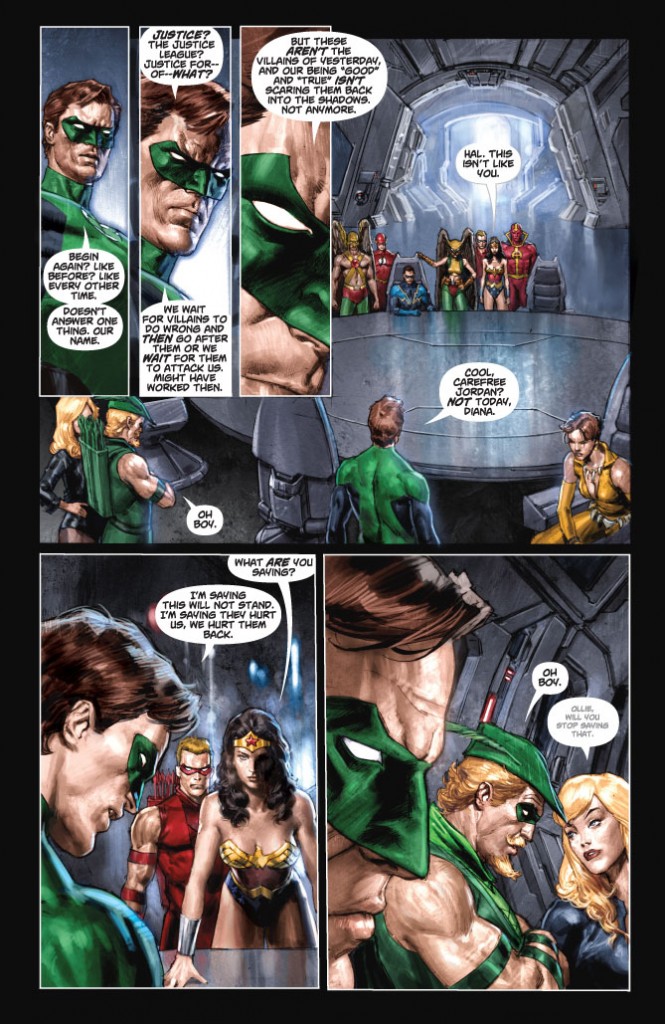 Cry for Justice starts off on a bit of a forced note. As mentioned, with the losses of two close friends, the Justice League debates on how to approach the issue of stopping criminals. After a disagreement with the other members, two old friends break off and look to take the fight to the villains’ front door in search of justice. Ray Palmer, The Atom, loses a friend, murdered in cold blood. He’s looking for justice. Congorilla’s gorilla troop, slaughtered. He wants justice. Starman’s boyfriend is killed; he demands justice. Literally, they all scream for justice. From Hal Jordan saying there isn’t enough “justice” in the Justice League, to Congorilla actually saying, “I want justice”, the dialogue comes off clunky and forced in these sections. These are mostly limited to the first issue, only rearing its head once more when Captain Marvel and The Atom simultaneously say, “justice”. At this point I wouldn’t mind using tweezers to take out each individual hair from the top of my buzzed head. It would less painful than Robinson’s attempts to drive home his point. The theme continues on through the book’s cast to the point where it becomes nauseating. These pieces of the story come off as very cheesy and unnecessary, yet it drives home the point of the series which is to highlight the sense of vengeance that overtakes these characters when they feel they’ve been wronged, and to see how these characters react. Yet, whenever the team seems to go too far, there is always someone to speak up and question the methods the team is taking; to keep them in check. This is especially the case in the scenes where Prometheus has been captured and interrogated. Those assertions are tested towards the end though, pushing the limits of what it means to be a hero or villain, where the line is drawn, and the price of justice.
Cry for Justice starts off on a bit of a forced note. As mentioned, with the losses of two close friends, the Justice League debates on how to approach the issue of stopping criminals. After a disagreement with the other members, two old friends break off and look to take the fight to the villains’ front door in search of justice. Ray Palmer, The Atom, loses a friend, murdered in cold blood. He’s looking for justice. Congorilla’s gorilla troop, slaughtered. He wants justice. Starman’s boyfriend is killed; he demands justice. Literally, they all scream for justice. From Hal Jordan saying there isn’t enough “justice” in the Justice League, to Congorilla actually saying, “I want justice”, the dialogue comes off clunky and forced in these sections. These are mostly limited to the first issue, only rearing its head once more when Captain Marvel and The Atom simultaneously say, “justice”. At this point I wouldn’t mind using tweezers to take out each individual hair from the top of my buzzed head. It would less painful than Robinson’s attempts to drive home his point. The theme continues on through the book’s cast to the point where it becomes nauseating. These pieces of the story come off as very cheesy and unnecessary, yet it drives home the point of the series which is to highlight the sense of vengeance that overtakes these characters when they feel they’ve been wronged, and to see how these characters react. Yet, whenever the team seems to go too far, there is always someone to speak up and question the methods the team is taking; to keep them in check. This is especially the case in the scenes where Prometheus has been captured and interrogated. Those assertions are tested towards the end though, pushing the limits of what it means to be a hero or villain, where the line is drawn, and the price of justice.
Extras
Like any collected volume, Cry for Justice comes with some extras inside. Beyond the collected seven issues, the volume comes with the standard statement from the writer to begin. Robinson’s letter offers a string of thoughts not in chronological order, such as his initial pitching process to then editor of DC comics, Dan Didio, to his concerns about the book becoming too dark. He even comments in hindsight to his usage of the word “justice” in the early issues, a concession he makes in hindsight. At the conclusion of the letter, he says that he feels this could be the darkest Justice League story to date, and that although that may be true and not to say that he’s proud of it, Robinson stands behind his work. In the face of all the criticism this series received for various reasons (which I’ll get to), he acknowledges that the darker tone the book takes is not for everyone, and some may be angered by it.
The main series is also accompanied by Sterling Gates’ three part series explaining a bit of Prometheus’ back-story. The story explains what happened to this Prometheus after his last encounter with the Justice League, during which his mind was invaded and put on “repeat” as J’onn J’onnz put it. This would last for as long as J’onnz was alive. The series follows Prometheus as he relives his past. We see his parents, their murders at the hands of the police, to his vendetta against those officers as he tracked down and killed each of them. Yet, once J’onnz is killed in Final Crisis, the effect ends and Prometheus arrives back at his senses. He quickly escapes the penitentiary he was placed in and hunts down the imposter who had assumed his identity while he was gone. He explains why he chose the name, “Prometheus”, and then proceeds to burn the man who we learn is actually Prometheus’ former protégé. The book ends with Prometheus promising to show everyone that he isn’t a joke, and that no one will expect what happens next. This piece can be read before Cry for Justice actually, and would supplement the series quite well.
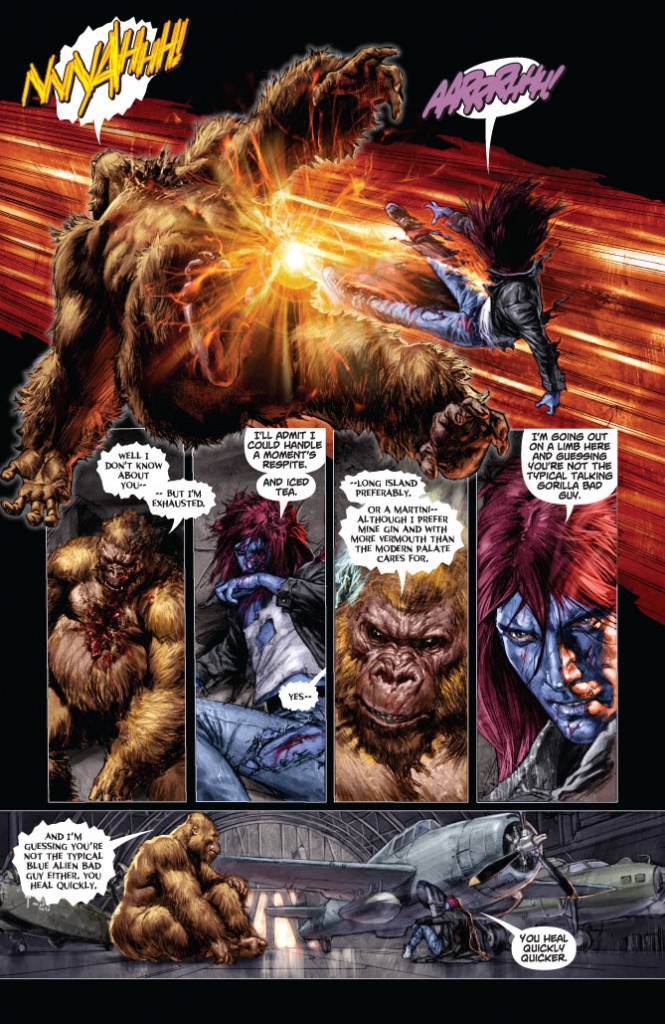 The final extras in the volume are short origins pieces on some of the characters. These two page origin tales would have appeared in DC’s monthly titles over the past few years, and explain who each character is, their powers and weapons, essential storylines for each character, and finally their affiliations. These shorts are done for Hal Jordan, Green Arrow, The Atom, Starman, Congorilla, Batwoman, and Captain Marvel. These additions are not major, and the book could survive on its own merits for better or worse without them, but they are helpful for readers not familiar with this version of the Atom, or someone like myself not up to speed on Congorilla or this specific version of Starman. In those cases these explanations are nice, but not game-breaking in the book’s overall appeal. However I think it would have only made sense to include Supergirl’s origin too, if only to clear that up for readers. I think the volume should have also included The Fall of Green Arrow one-shot which fleshes out the series’ ending. If you have read the series previously, or are just reading it now, the J.T. Krul penned issue should still be available in comic shops. I think this volume would have been a good place for it, and I was hoping it would be included.
The final extras in the volume are short origins pieces on some of the characters. These two page origin tales would have appeared in DC’s monthly titles over the past few years, and explain who each character is, their powers and weapons, essential storylines for each character, and finally their affiliations. These shorts are done for Hal Jordan, Green Arrow, The Atom, Starman, Congorilla, Batwoman, and Captain Marvel. These additions are not major, and the book could survive on its own merits for better or worse without them, but they are helpful for readers not familiar with this version of the Atom, or someone like myself not up to speed on Congorilla or this specific version of Starman. In those cases these explanations are nice, but not game-breaking in the book’s overall appeal. However I think it would have only made sense to include Supergirl’s origin too, if only to clear that up for readers. I think the volume should have also included The Fall of Green Arrow one-shot which fleshes out the series’ ending. If you have read the series previously, or are just reading it now, the J.T. Krul penned issue should still be available in comic shops. I think this volume would have been a good place for it, and I was hoping it would be included.
Overall Thoughts
Although the series is not for everyone, I enjoyed Cry for Justice. The individual issues when read together flow quite well, and the slow building story arc is barely noticeable when you don’t have to wait a month to read the next issue. That immediate gratification comes with each successive issue as the story builds towards its conclusion. From the beginning we’re brought into a world where people are being murdered in cold blood, from Bruce Wayne and J’onnz, to security guards at the Flash museum. I like the sense of urgency this creates for the main characters, motivating them to take down a number of villains preemptively. A lot of this happens off-panel though, and I think at least part of perhaps the second issue could have focused more on taking down a secondary accomplice of Prometheus as opposed to a number of faceless bad guys. Much of the later, more impactful events happen off-panel to preserve the shock of those events actually happening as well. Everything is written in such a way that it ominously alludes to what’s going to happen, but nothing is too obvious that it jumps out and smacks you. You will however smack yourself when you remember that piece of dialogue later. One piece I liked was something I thought was an editorial mistake, yet by the end you realize that bit of dialogue was intentionally placed to signify Prometheus actually slipping up and making a mistake, and it’s only something you would have glanced over. The writing is nicely crafted, presented at an even pace and staying true to each character’s humanity or building on it in the case of the lesser known characters.
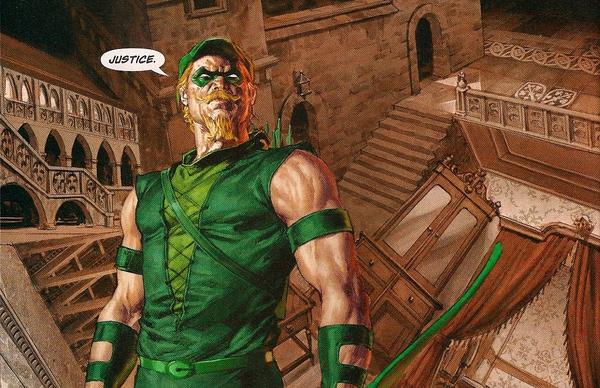 When the series was first announced, it was billed as the pro-active Justice League spiraling out of the main Justice League title. It was to be made of members seeking to end threats before they can materialize, some of which were fringe characters we may not be too familiar with. In the case of Jordan and Green Arrow, the team included members of the main Justice League who had become tired of the team’s methods. In serial format though, the book was panned for several reasons. One, the book’s pacing was thought to be slow and uneventful, not really picking up until the third or fourth issue. I suppose this criticism largely comes from the book’s premise, in that fans may have expected a little more gun (or ring) slinging heroics than we got. For someone who is used to a constant stream of action sequences, this book was not your cup of earl grey. I think the story offered a change of pace though, especially not having read the series in serial format, and coming off the constant barrage of action that Blackest Night offered. The story slowly builds up to its conclusion, establishing its foundation from the early issues and building towards its climax in the later issues. Overall the series reads quite well as a collected volume.
When the series was first announced, it was billed as the pro-active Justice League spiraling out of the main Justice League title. It was to be made of members seeking to end threats before they can materialize, some of which were fringe characters we may not be too familiar with. In the case of Jordan and Green Arrow, the team included members of the main Justice League who had become tired of the team’s methods. In serial format though, the book was panned for several reasons. One, the book’s pacing was thought to be slow and uneventful, not really picking up until the third or fourth issue. I suppose this criticism largely comes from the book’s premise, in that fans may have expected a little more gun (or ring) slinging heroics than we got. For someone who is used to a constant stream of action sequences, this book was not your cup of earl grey. I think the story offered a change of pace though, especially not having read the series in serial format, and coming off the constant barrage of action that Blackest Night offered. The story slowly builds up to its conclusion, establishing its foundation from the early issues and building towards its climax in the later issues. Overall the series reads quite well as a collected volume.
Secondly, another criticism heaped on Robinson’s series revolved around the mischaracterization of some of the principal members of the team, yet I don’t quite see this. Green Arrow continues to be the voice of reason, Hal Jordan becomes the take charge leader of the team, coming into his role as a space cop for the space sector earth rests in. Supergirl, by the end of the book, comes off as a very smart and deductive character, figuring out the book’s mystery. If you even go back and read her dialogue, those seeds are sewn throughout the series, and it becomes clear that she has an inkling as to what’s going on the entire time. As for the other characters, they are so minor or unknown that those mischaracterizations are likely only held by a smaller percentage of the fans. The one exception to this is Captain Marvel, which becomes clear as the book goes on. This second point really is moot, and I would ask whether critiques would prefer the alternative to these characterizations.
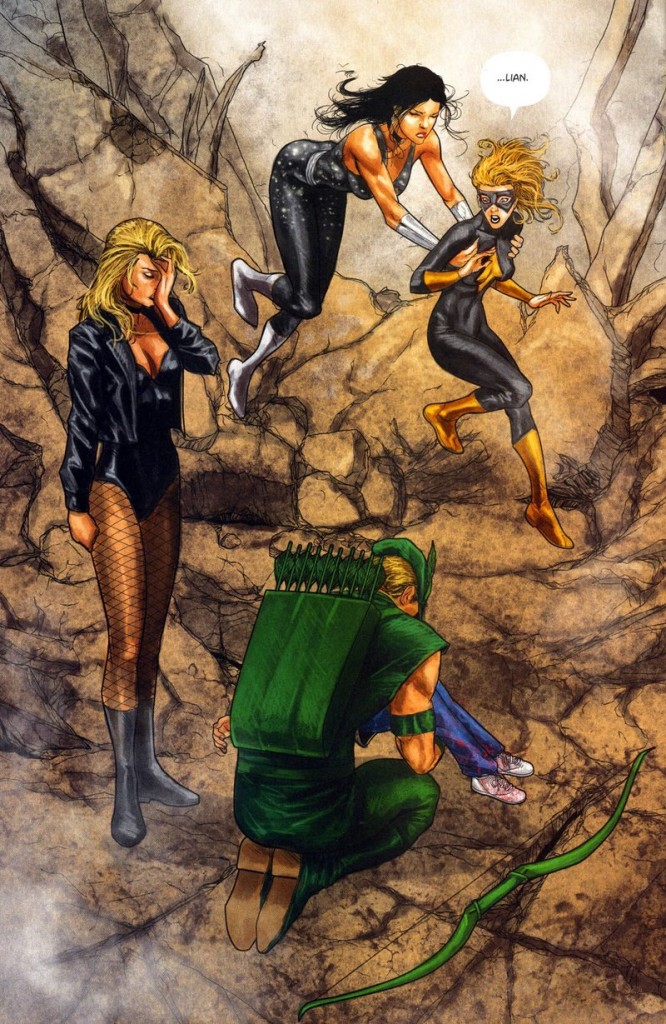 Another criticism focused on how some of the characters were treated, one maimed and the other dead. The book is at its most gruesome towards the final issues where Prometheus’ plot hatches, and the lives of two characters are changed forever. For the sake of those who haven’t read the series, I’ll omit the characters’ names. Comic book heroes have traditionally been these larger than life caricatures of heroism or villainy. We often forget though these characters are still people. Good things happen, spliced in with the bad. Even more, the world isn’t simplistically black and white, and there is a blurred line either camp toes on the precipice of either extreme. If anything, this book continues Brad Meltzer’s work on Identity Crisis and further humanizes the characters involved. Robinson tears down the popular conceptions of heroism and explores the dirtier side of vigilante justice, blurring the lines of heroism even further as the book’s closing events destroys that archetype. The book pushes those boundaries by asking, if you were to lose someone close to you, or have something terrible happen to another, how would you react? If your answer is a string of assurances to the contrary, the book addresses that too. It’s one thing to assert a stance, but it’s another to stand by it in the face of real life events. We see the human side of the characters, feeling their strife, anger and sadness, culminating with their desire for retribution. Robinson’s characters appropriately explore that side of the comic book universe, highlighting that although seeking justice is one thing, understanding the price of it is another matter entirely.
Another criticism focused on how some of the characters were treated, one maimed and the other dead. The book is at its most gruesome towards the final issues where Prometheus’ plot hatches, and the lives of two characters are changed forever. For the sake of those who haven’t read the series, I’ll omit the characters’ names. Comic book heroes have traditionally been these larger than life caricatures of heroism or villainy. We often forget though these characters are still people. Good things happen, spliced in with the bad. Even more, the world isn’t simplistically black and white, and there is a blurred line either camp toes on the precipice of either extreme. If anything, this book continues Brad Meltzer’s work on Identity Crisis and further humanizes the characters involved. Robinson tears down the popular conceptions of heroism and explores the dirtier side of vigilante justice, blurring the lines of heroism even further as the book’s closing events destroys that archetype. The book pushes those boundaries by asking, if you were to lose someone close to you, or have something terrible happen to another, how would you react? If your answer is a string of assurances to the contrary, the book addresses that too. It’s one thing to assert a stance, but it’s another to stand by it in the face of real life events. We see the human side of the characters, feeling their strife, anger and sadness, culminating with their desire for retribution. Robinson’s characters appropriately explore that side of the comic book universe, highlighting that although seeking justice is one thing, understanding the price of it is another matter entirely.
Andrew Ardizzi is a student of journalism at Humber. He writes for the Humber Et Cetera. You can find him at his blog Come Gather ’round People Wherever You Roam. He’s a pretty swell guy.

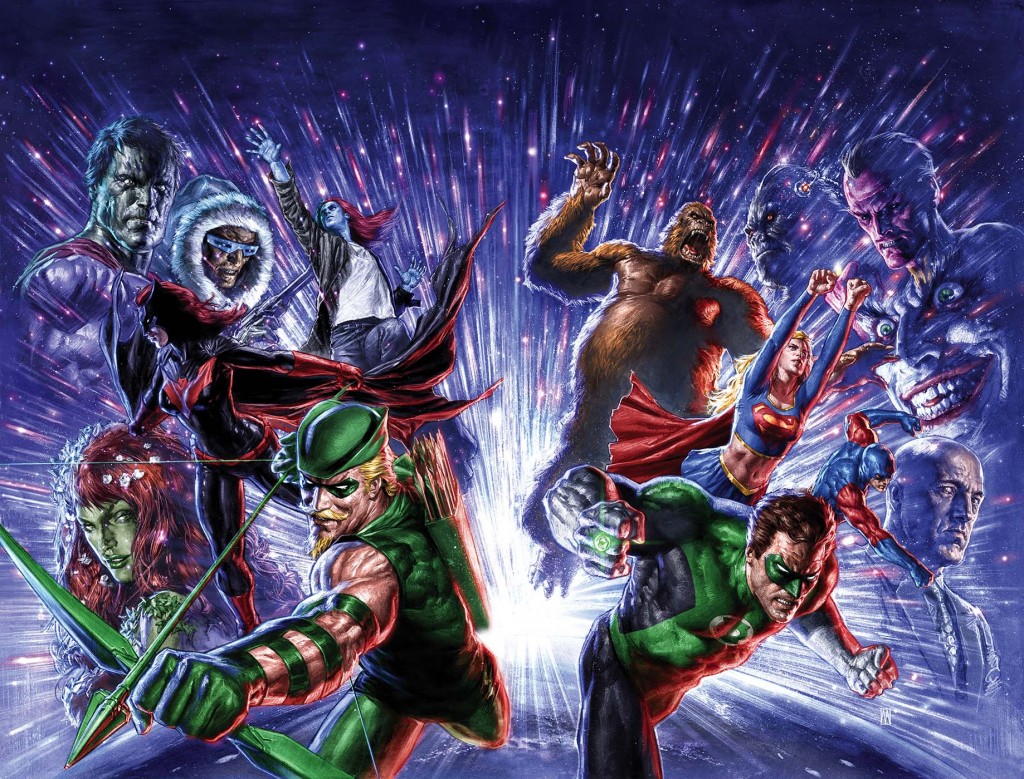
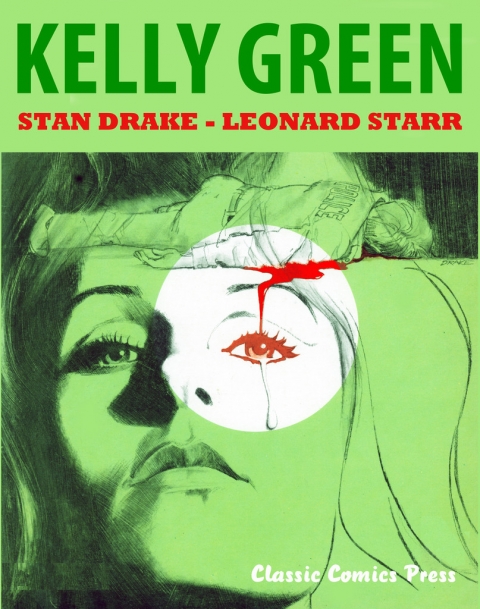
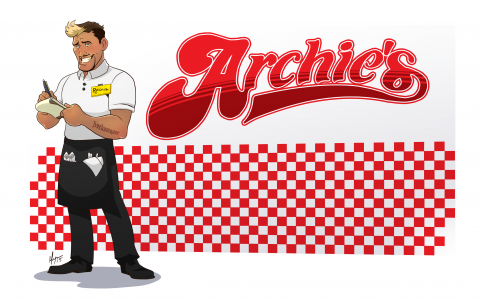
1